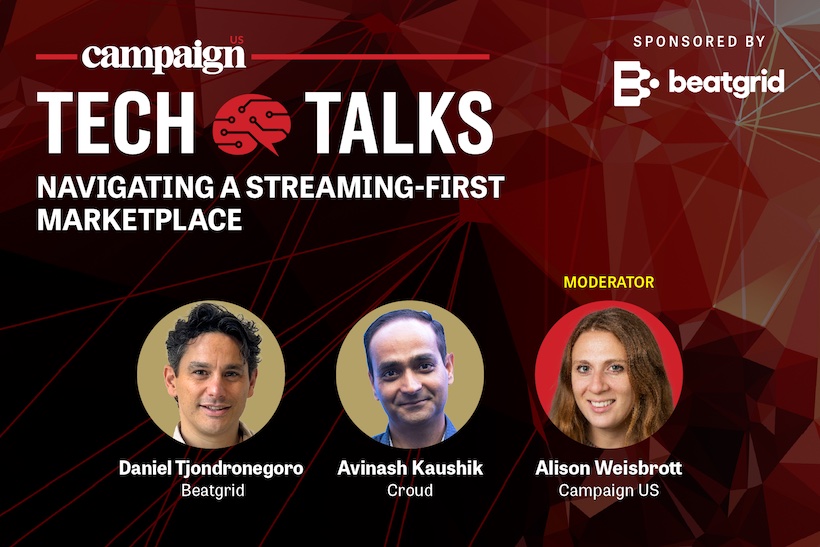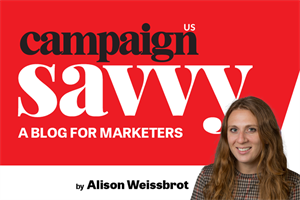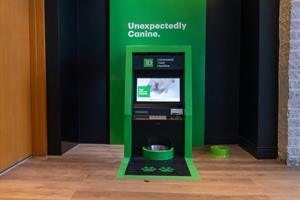Streaming TV viewership continues to gain on linear, creating a seismic shift in the TV advertising marketplace. As advertisers converge their linear and TV buying and measurement budgets, media owners are rapidly adapting their sales approaches, businesses and technology solutions to meet their needs. The collision of streaming and e-commerce also opens up new consumer behaviors that brands can take advantage of.
During a recent Campaign US Tech Talk, editor-in-chief Alison Weissbrot moderated a discussion between Avinash Kaushik, global chief strategy officer at Croud, and Daniel Tjondronegoro, cofounder of Beatgrid, about how TV buying strategies are changing as the streaming market continues to dominate.
Understanding the impact
As audiences continue to fragment across different media channels, it's important that marketers not only reach audiences holistically where they are but also measure their reach across these platforms.
“Anything we do on TV has to be surrounded by an orchestration that allows us to have a conversation wherever the target audience tends to be,” Kaushik said. “Frequency plays a much bigger role in delivering outcomes we want from TV, YouTube or Meta than we used to believe in the past.”
For example, a buy of 150 gross rating points a week for six weeks might buy the frequency needed for a point of brand lift on TV in the U.S.
“We're doing assessments of the impact that campaigns are having on brand metrics like unaided brand awareness, consideration and intent, and seeing the other side — revenue, profit, etc. — driven by TV,” he explained.
Today, the measurement conversation is focused on the impact of the entire campaign and on brand lift.
“In an era where the consumer is shifting between platforms and individual channels within those platforms so quickly, it's incredibly difficult to have an understanding of the consumer journey or consumer exposure to your brands across the different platforms if we still rely on measuring in channel-based silos,” Tjondronegoro said. For advertisers today, “one of the key questions is what is the incremental impact of that channel?”
Adopting new measurement frameworks
Performance and brand incrementality is critical to understanding the important role marketing plays in a brand’s success.
“The incrementality of performance marketing is less difficult to measure because you use tested control,” Kaushik explained. “Proving incrementality of brand marketing is harder because the purpose of brand marketing is not to drive sales tomorrow, but to increase market share for your company over a long period of time.” To prove long-term impact, Croud uses a combination of brand lift studies, campaign-level studies and sophisticated machine learning models.
“Identifying channel incrementality starts with a more accurate measurement,” Tjondronegoro said. “The world of campaign measurement is relying a lot on big data and relying a lot on big data is only going to move us further away from measuring the individual with accurate demographics behind it.”
Instead, marketers need a single source of data to assess the impact of marketing on the individual’s journey across different platforms. To solve that problem, Beatgrid developed a single-source, automatic content recognition-based mobile panel that measures an individual’s ad exposure across channels and the incremental effectiveness of campaign tactics.
Typically, advertisers can access complimentary brand lift studies from TV, YouTube and Facebook. “While brand lift studies help with tactical optimization, you can't compare KPIs because individual siloed measurement doesn't tell you what you got from the portfolio level,” Kaushik said.
Beatgrid leverages a privacy-first double opt-in mobile people panel that through the individual’s smartphone can measure ad exposure across channels and then tie it up to brand lift and ad impact.
“The solution that we built captures continuous data points on an individual level, and allows us to make that apples-to-apples comparison,” Tjondronegoro explained. “It's an understanding not only of their cross-media exposure and their post-exposure behavior, but their attitude to understand the long-term impact of the brand and how each channel is contributing to that.”
It’s no surprise that generative artificial intelligence (AI) is making its way into the measurement conversation. In advertising, it primarily has three different use cases: as a tool, co-pilot and muse, Kaushik noted. For example, in the case of a failed campaign, an advanced algorithm such as a classified decision tree can run through data to detect patterns and understand why it didn’t succeed. “AI can help build better creative and answer the unknown unknowns,” he said. This will ultimately lead to a higher level of incrementality and brand lift.
In this new measurement framework, secondary currencies have become increasingly valuable. “The consumer is swiftly moving between content and at the same time, the marketer is having to deal with a lot of privacy legislation and a new privacy regulation, which limits the way you can navigate the difficult landscape of measurement,” Tjondronegoro said. “Measurement is a team sport, and the market, the buyer, the agency and the publisher need to adopt as much as possible the new solutions out there.”










